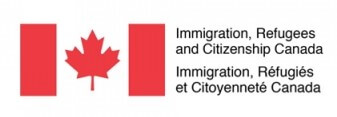Canada Takes Action to Adjust Immigration Policies Amid Economic Shifts
The Voice of Canada News:
The Canadian government is implementing significant changes to its immigration policies in response to evolving economic conditions and labor market demands. In a move aimed at reducing the number of temporary residents in the country, Immigration, Refugees and Citizenship Canada (IRCC) has announced a plan to decrease the share of temporary residents from 6.5% to 5% of Canada’s total population by 2026.
Marc Miller, Minister of Immigration, Refugees and Citizenship, emphasized the need for these changes, stating, “Our immigration system must preserve its integrity and be well managed and sustainable. As we look forward, we will do everything it takes to achieve that goal and set newcomers up for success.”
Key components of the new immigration strategy include:
- Reduction in International Student Permits: The government will reduce the intake cap for international student study permits by 10% for 2025, resulting in a target of 437,000 new study permits issued. The intake cap will then stabilize for 2026.
- Updated Work Permit Eligibility: Eligibility for work permits will be restricted to spouses of master’s degree students whose programs are at least 16 months long, as well as spouses of foreign workers in management or professional occupations facing labor shortages.
- Changes to the Post-Graduation Work Permit Program: The program will be updated to better align with labor market needs, introducing language proficiency requirements for applicants. Starting November 1, 2024, a Canadian Language Benchmark (CLB) level of 7 will be required for university graduates, and CLB 5 for college graduates.
- Enhancements to the Asylum System: In light of increased asylum claims, the government is implementing partial visa requirements for Mexican nationals and improving the processing of claims while maintaining fairness and integrity in the asylum system.
Minister of Employment, Workforce Development and Official Languages, Randy Boissonnault, noted, “The changes we are making today will prioritize Canadian workers and ensure Canadians can trust the program is meeting the needs of our economy.”
These reforms are designed to manage the volume of temporary residents entering Canada, uphold the integrity of the immigration system, and protect vulnerable populations. The government is committed to listening to Canadians, including provincial, territorial, and municipal partners, as they navigate the challenges of a changing economic landscape.
Further information regarding these measures will be available on the government’s website in the near future.





